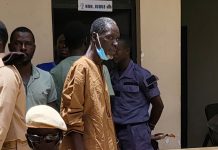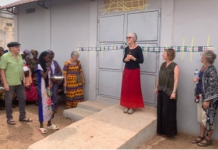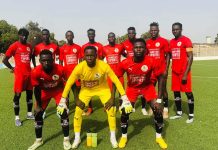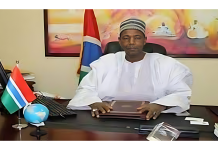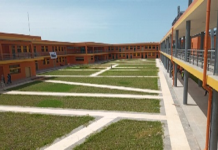with Abdoulie Dibba
This column is devoted to monitor and report on issues that are relating to production, processing,  preservation and marketing of Agricultural products with the ultimate goal of ensuring food security in the Gambia as well as the interventions of Government and Non-governmental Organizations.
preservation and marketing of Agricultural products with the ultimate goal of ensuring food security in the Gambia as well as the interventions of Government and Non-governmental Organizations.
In this edition and subsequent editions, Farmers’ Eye will focus on the Agricultural Programmes and projects to show where the country is in the drive to ensure food security.
In 2005, ECOWAS agreed on an Action Plan (2005- 2010) to implement both the CAADP, and ECOWAP. ECOWAS was then  mandated to implement the Action Plan, and consequently, the Regional Agricultural Investment Program (RAIP), which supplements national programs within the framework of the CAADP. The RAIP is sub-divided into the following six sub-programs:
mandated to implement the Action Plan, and consequently, the Regional Agricultural Investment Program (RAIP), which supplements national programs within the framework of the CAADP. The RAIP is sub-divided into the following six sub-programs:
1). Development of Agricultural chains and market promotion
2). Improvement of water management
3). Prevention and management of food crises and other natural disasters
4). Improved management of the other shared resources
5). Sustainable farm development
6). Institutional capacity building for the implementation of the RAIP
A key step towards the formulation of the RAIP is the preparation of National Agricultural Investment Programs (NAIPs) of ECOWAS member states. These NAIPs are expected to be harmonized and consolidated, and thus form the basis of the RAIP. Towards this end, the Government of The Gambia, embarked on preparing a NAIP, with its two CAADP implementing ministries, the Ministry of Agriculture (MOA), and the Ministry of Trade, Industry, and Employme11t (MOTIE), spearheading the process.
The GNAIP was prepared in a highly consultative and participatorymanner aimed at producing a document that is not only of the highest quality, but also has the ownership of the widest spectrum of stakeholders (government agencies, non-governmental organizations and the private sector).
As a framework, the GNAIP is aimed at helping achieve the policies objectives of the ANR policy, which ultimately help the country achieve the MDGs.
The GNAIP also provides the Gambia’s agricultural investment program in the six areas identified in the RAlP. The program is thus deeply rooted both in the national, regional, and international development frameworks and agenda.



